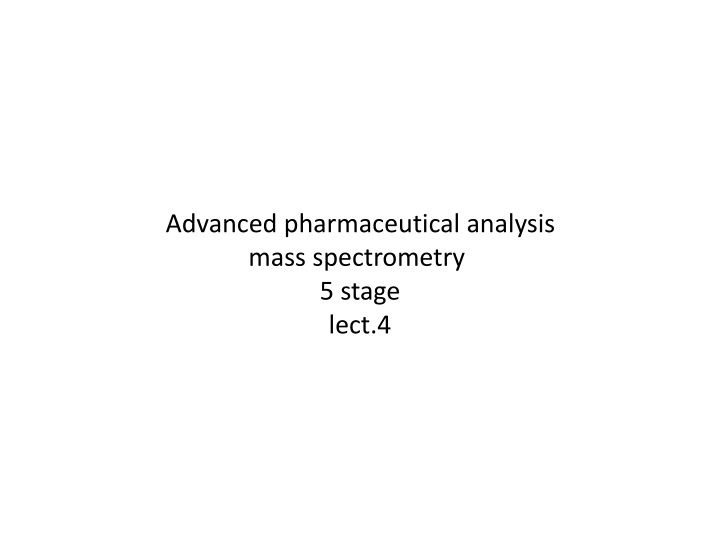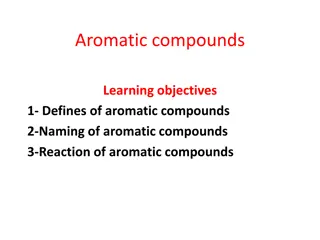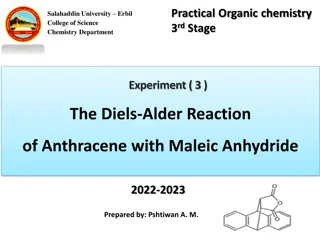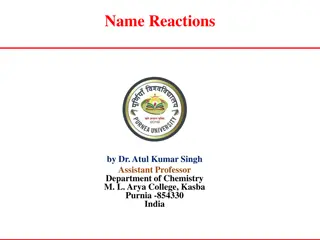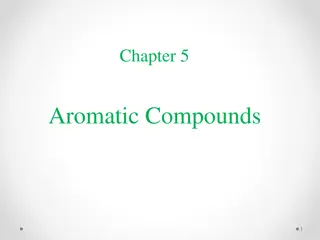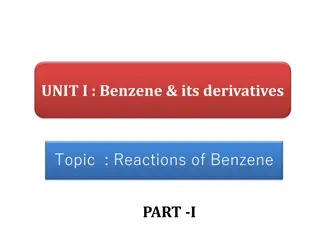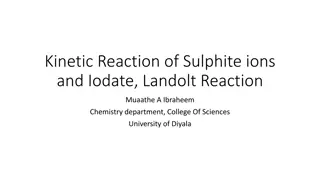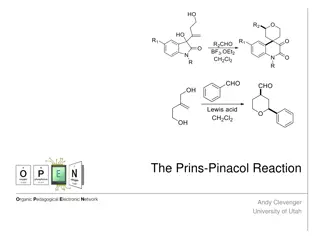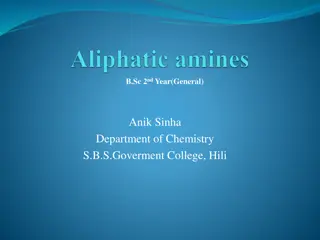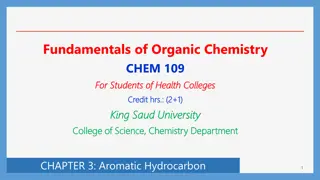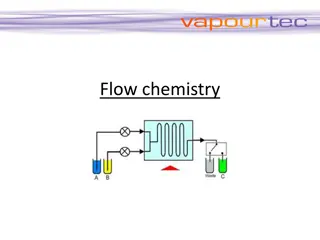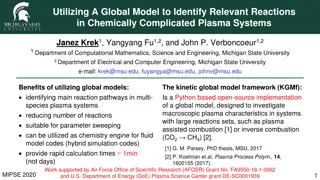Aliphatic-Aromatic Reaction Chemistry Drill
This chemistry drill and practice session focuses on aliphatic-aromatic reactions, synthesis, and industrial routes. It covers topics such as sensitive reaction sites, reduction reactions, reactivities of compounds, and more. Dive into the world of organic chemistry challenges and reactions with this comprehensive practice resource.
Download Presentation

Please find below an Image/Link to download the presentation.
The content on the website is provided AS IS for your information and personal use only. It may not be sold, licensed, or shared on other websites without obtaining consent from the author.If you encounter any issues during the download, it is possible that the publisher has removed the file from their server.
You are allowed to download the files provided on this website for personal or commercial use, subject to the condition that they are used lawfully. All files are the property of their respective owners.
The content on the website is provided AS IS for your information and personal use only. It may not be sold, licensed, or shared on other websites without obtaining consent from the author.
E N D
Presentation Transcript
Advanced pharmaceutical analysis mass spectrometry 5 stage lect.4
Amines Aliphatic Amines M will be an odd number for monoamine; may be weak/absent M-1 common -cleavage of an alkyl radical is predominate fragmentation mode largest group lost preferentially McLafferty rearrangement / loss of NH3 (M-17) are not common
Amines fragmentation patterns * -cleavage
Aromatic Amines M usually strong M-1 common loss of HCN is common in anilines.
Aldehydes M may be weak in aliphatic aldehydes M-1 common ( -cleavage) -cleavage is predominant fragmentation mode; often diagnostic (m/z = 29)especially in aromatic aldehydes (M-1; M-29) -cleavage results in M-41 fragment; greater if -substitution McLafferty rearrangement in appropriately substituted systems (m/z = 44 or higher)
Ketones M strong -cleavage is the primary mode of fragmentation -cleavage less common, but sometimes observed McLafferty rearrangement possible on both sides of carbonyl if chains sufficiently long Cyclic ketones show complex fragmentation. Aromatic ketones primarily lose R upon -cleavage, followed by loss of CO
Carboxylic Acids M weak in aliphatic acids; stronger in aromatic acids Most important -cleavage involves loss of OH radical (M-17) -cleavage with loss of alkyl radical less common; somewhat diagnostic (m/z = 45) McLafferty rearrangement in appropriately substituted systems (m/z = 60 or higher) Dehydration can occur in o-alkyl benzoic acids (M-18)
Esters M weak in most cases; aromatic esters give a stronger parent ion Loss of alkoxy radical more important of the - cleavage reactions Loss of an alkyl radical by -cleavage occurs mostly in methyl esters (m/z = 59) McLafferty rearrangements are possible on both alkyl and alkoxy sides Benzyloxy esters and o-alkyl benzoates fragment to lose ketene and alcohol, respectively
Amides -cleavage affords a specific ion for primary amides (m/z = 44) McLafferty rearrangement observed when - hydrogens are present.
